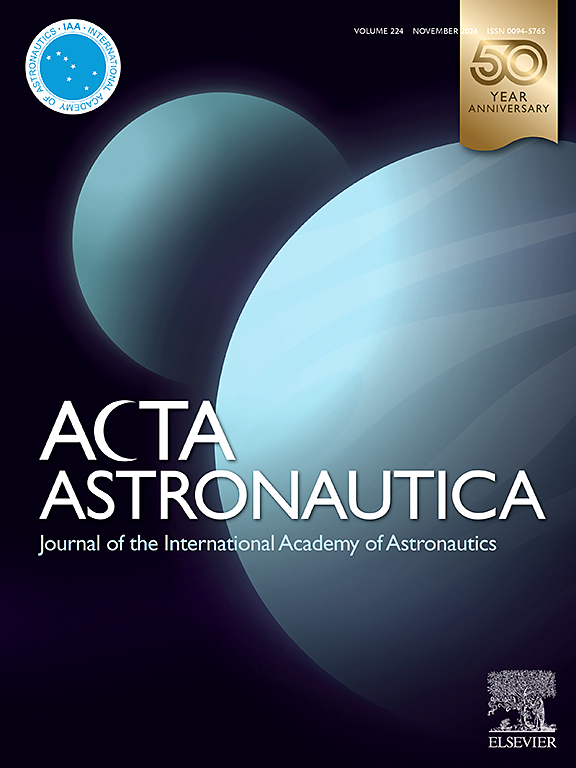Motion planning of free-floating space robots through multi-layer optimization using the RRT* algorithm
IF 3.1
2区 物理与天体物理
Q1 ENGINEERING, AEROSPACE
引用次数: 0
Abstract
This paper introduces a motion planning method for capture of tumbling objects using a free-floating space robot. The proposed approach incorporates an improved Rapidly Exploring Random Tree Star (RRT*) algorithm enabling obstacle avoidance and generating desired trajectories for the robot’s end-effectors. Additionally, a multi-layer optimization process and a greedy policy are proposed to achieve singularity avoidance, joint velocity, and acceleration optimization by leveraging the robot arm’s joint energy distribution, torque, and manipulability. By adopting this motion planning strategy, the space robotic system demonstrates improved performance in obstacle and singularity avoidance, without the need for inverse Jacobian matrix calculations. Furthermore, the multi-layer optimization process enhances trajectory smoothness and reduces end-effector vibration through energy and torque optimization. This research contributes to advancing space robotic systems by enhancing the entire energy and torque consumption on motion planning to make the end-effector move smooth and reduce the vibration.
求助全文
约1分钟内获得全文
求助全文
来源期刊

Acta Astronautica
工程技术-工程:宇航
CiteScore
7.20
自引率
22.90%
发文量
599
审稿时长
53 days
期刊介绍:
Acta Astronautica is sponsored by the International Academy of Astronautics. Content is based on original contributions in all fields of basic, engineering, life and social space sciences and of space technology related to:
The peaceful scientific exploration of space,
Its exploitation for human welfare and progress,
Conception, design, development and operation of space-borne and Earth-based systems,
In addition to regular issues, the journal publishes selected proceedings of the annual International Astronautical Congress (IAC), transactions of the IAA and special issues on topics of current interest, such as microgravity, space station technology, geostationary orbits, and space economics. Other subject areas include satellite technology, space transportation and communications, space energy, power and propulsion, astrodynamics, extraterrestrial intelligence and Earth observations.
 求助内容:
求助内容: 应助结果提醒方式:
应助结果提醒方式:


